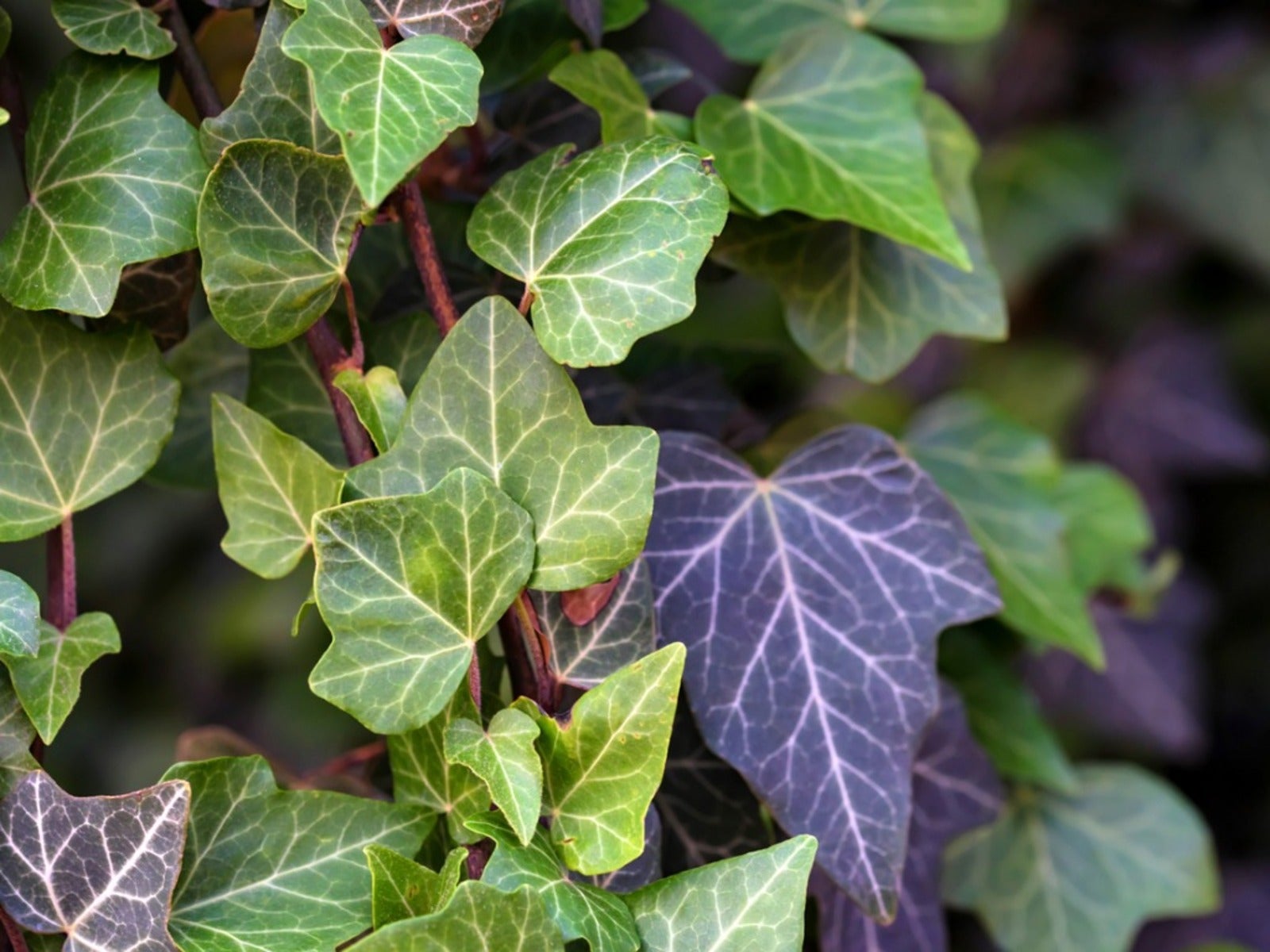English Ivy Alternatives – Grow These Native Plants Instead


Invasive English ivy causes a lot of problems in North America. It spreads rapidly, harms trees, and outcompetes native plants. If you have ivy in your garden, consider removing it. Using native vines or groundcover to replace ivy, you can transform your garden and make it friendlier to the ecosystem in your area.
The Problem of English Ivy
English ivy is an evergreen vine native to parts of Europe, northern Africa, and western Asia. It came to North America as an ornamental landscape plant. With a support on which to grow, ivy can reach heights of 90 feet (27 m) or more. It is an attractive plant with dark green, three-lobed leaves. It is easy to grow and grows quickly. It is one of the few garden plants that can grow even in deep shade.
These are the properties that made English ivy a desirable landscaping plant, but it also causes a lot of problems and is considered invasive in many areas. The main problem with English ivy is that it has escaped many gardens and has grown aggressively in native forests.
When ivy climbs trees, the weight can break branches. As it reaches the canopy of a tree, it shades the leaves and prevents the tree from accessing sunlight. When ivy climbs buildings, it can damage both siding and masonry.
Ivy also creeps along the ground, creating a dense groundcover that hosts rats and other pests. All parts of the English ivy plants are poisonous.
Non-Invasive Ivy Alternatives
English ivy has a lot of attractive properties. Many people put it in to tackle difficult shady spots in the garden, but there are better options. Knowing what to replace ivy with depends on your gardening goals and your region. These are some plants that can provide the same climbing vine effect or groundcover in shade or partial shade and that are native to many parts of the U.S.
Groundcovers
To mimic the tight, dense mats that ivy creates on the ground in a healthier way, try these native species:
Gardening tips, videos, info and more delivered right to your inbox!
Sign up for the Gardening Know How newsletter today and receive a free copy of our e-book "How to Grow Delicious Tomatoes".
- Creeping phlox. For groundcover with spring flowers, choose creeping phlox. It will provide a thick mat of violet flowers in spring and green foliage the rest of the year.
- Wild ginger. Different varieties of native ginger make a pretty groundcover. The leaves are heart-shaped and green.
- Golden ragwort. This groundcover is evergreen and spreads readily in thick mates of foliage. In spring, it produces tall shoots of yellow flowers that attract native pollinators.
- Green-and-gold. Evergreen in the warmer part of its native range, the groundcover green and gold produces yellow spring flowers.
- False lily of the valley. Lily of the valley is another attractive but problematic non-native species. Choose this native lookalike that produces similar leaves and white flower clusters. It will spread readily in shady, wooded areas.
- Christmas fern. If you like the texture of ferns, this Christmas fern provides a great groundcover for your shadiest areas and woodland gardens. It gets its name from the fact that it stays green through Christmas in many areas.
- Other ferns. Other ferns that will do fairly well in your shady areas and act like a groundcover include northern lady fern and northern maidenhair fern.
Vines
If you want to replace the vining effect of English ivy, you won’t find a native that is quite as robust or with the same glossy, deep evergreen leaves, but these alternatives are just as attractive in their own ways:
- Virginia creeper. This vine grows taller than English ivy but is less dense. Virginia creeper climbs trees but does not harm them. The foliage is deciduous and drops off in fall to allow the trees to access sunlight. It does grow aggressively, so be aware that it will spread.
- Trumpet honeysuckle. Native honeysuckles are vines. Beware of honeysuckle shrubs, which are invasive. The flowers feed pollinators and the berries feed other wildlife.
- Crossvine. Crossvine grows quite long and produces showy, trumpet-shaped flowers. This vine will attach to and climb walls without support, just like English ivy.

Mary Ellen Ellis has been gardening for over 20 years. With degrees in Chemistry and Biology, Mary Ellen's specialties are flowers, native plants, and herbs.
-
 Zinnias On Repeat: 10 Glorious Cut-And-Come-Again Varieties For Endless Summer Bouquets
Zinnias On Repeat: 10 Glorious Cut-And-Come-Again Varieties For Endless Summer BouquetsThese zinnia varieties keep giving all summer, making them the perfect choice for dedicated cutting gardens – or just the occasional homegrown bouquet.
By Ellen Wells
-
 Create A Romantic Garden Straight Out Of Bridgerton: Regency Era Romance In Your Garden
Create A Romantic Garden Straight Out Of Bridgerton: Regency Era Romance In Your GardenTry some romantic garden ideas straight out of Bridgerton. Flowers and gardens in the Regency era were lush and charming and you can get the same look!
By Bonnie L. Grant